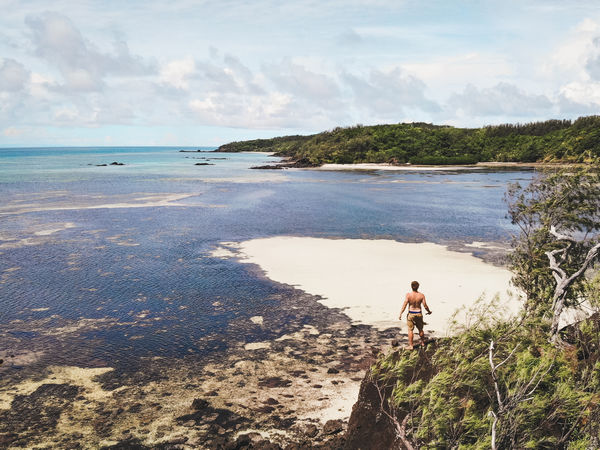Traveling Bangladesh, the World’s Scariest Roads
Arrival in Dhaka
Traveling Bangladesh can be summed up as a sensory overload. The excessive use of horns, traffic which obeys no rules and total human congestion everywhere you look. That’s just the first 10 minutes in the capital Dhaka.
Then again, what else is to be expected of a country with a population of 150 million people? All of which is crammed into a space only half the size of Malaysia.
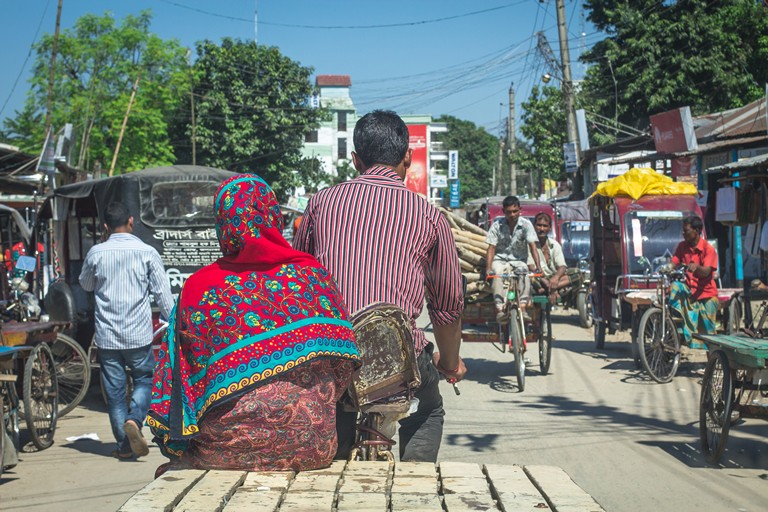
The small country has such a huge population that roads are swarmed with people, animals, shops and vehicles. However overcome the culture shock and see through the mayhem then Bangladesh has something quite special to admire. It is a country with a diverse culture, almost totally uninfluenced by western tourism.
Over the next two days we will leave Dhaka and travel far off the beaten track to the northern reaches of Bangladesh. We will see an area drenched in culture, untainted by tourism. This is a side of Asia rarely seen by travelers.
Rangpur the Center of Northern Bangladesh
After two days in Dhaka we depart the city just before the 7am rush hour. We’re heading far north to the Rangpur division. Rangpur is the poorest area in Bangladesh and is bordered by India to the North, East and West.
The Rangpur division is home to approximately 16 million people. The majority of these are farmers with no access to electricity. Houses are built of mud and wood and bicycles are by far the most common means of transport.
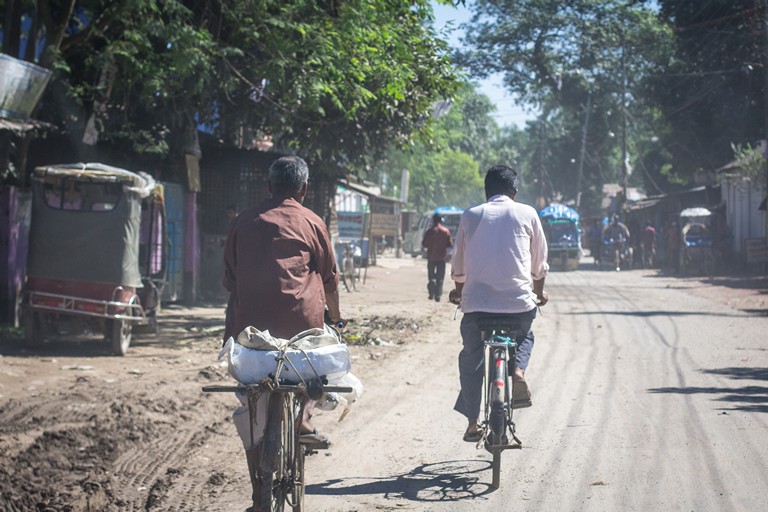
Saidpur is the largest city in Rangpur. This is where we meet our driver Rafi, a tanned middle aged man with tea stained teeth. Ushering us over to his van we cram our luggage into the back. Here my Bangladeshi companions suggest I take the front seat of the van which offers the best view. They all too eagerly jump into the back seats of the van.
As we hit the road the Dhaka mayhem comes back to life, yet this time it is amplified. By escaping the city and traveling Bangladesh’s countryside you may think you’re leaving the city madness behind. You’re wrong.
The road leading out the airport is filled with cars, vans, trucks, rickshaws, goats, cows, a flock of ducks and an old man who seems to have fallen asleep in the sun. Peddle rickshaws carry heavy loads of building materials to the town center while children as young as 10 years old work manual labor building a new paved wall along the main road.
The culture shock continues.
Dalia and the Road of Craters
North from Saidpur we head for the small district of Dalai set along the banks of the Teesta River. This 70km journey takes almost 4 hours. The highway from Saidpur to Dalia is by far the worst road I’ve ever traveled. The potholes are large enough to be called craters. These craters take up three quarters of the road’s width and are deep enough to swallow a car whole. Add in the complexity of bi-directional traffic and there’s a real challenge on hand.
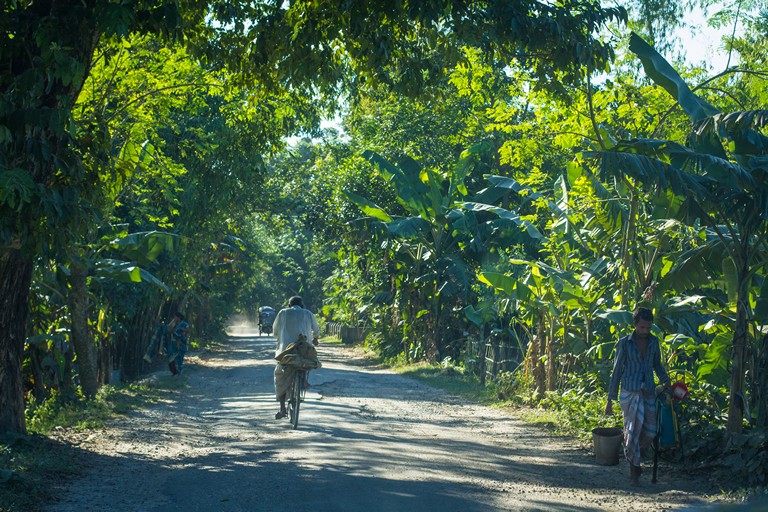
After 2 hours of slow travel we come to an abrupt stop. The van sinks into a crater with a deep scraping sound. A slight misjudgment with an oncoming tractor throws the van off course with the result that our front bumper has been torn off completely.
After 2 hours of slow travel we come to an abrupt stop. The van sinks into a crater with a deep scraping sound. A slight misjudgment with an oncoming tractor throws the van off course with the result that our front bumper has been torn off completely.
Rafi quickly pulls electrical wire out of the glove box and crawls under the van. Within minutes he has pulled front bumper out and loosely reattached it with the electrical wire. Roadside repairs Bangladeshi style.
Put aside the crater eating cars, the ignorance of road rules and insanely congested rods and Dalia is a beautiful place. Young children chase ducks and goats around the school yard, women walk by the roadside dressed in vibrant traditional garments, and elderly men transport all sorts of goods by rickshaw. The roads are lined thick with trees making you feel as though you’re traveling through a magical tunnel to another world.
In fact northern Bangladesh is almost otherworldly, like nothing you’ve experienced before.
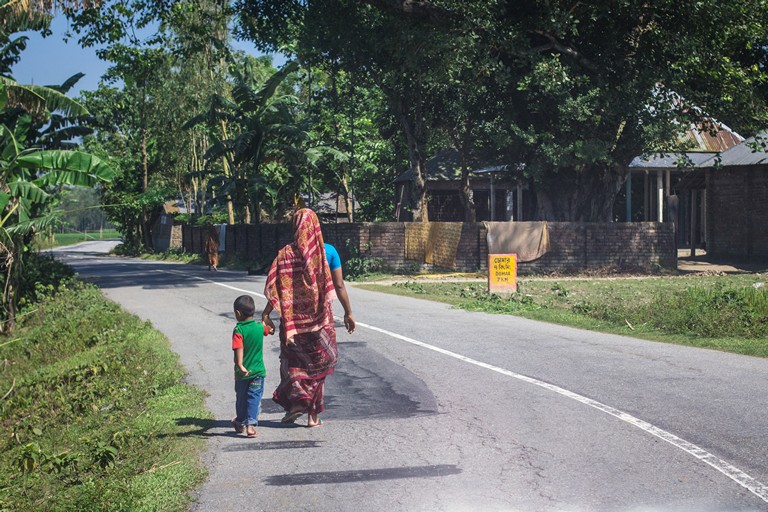
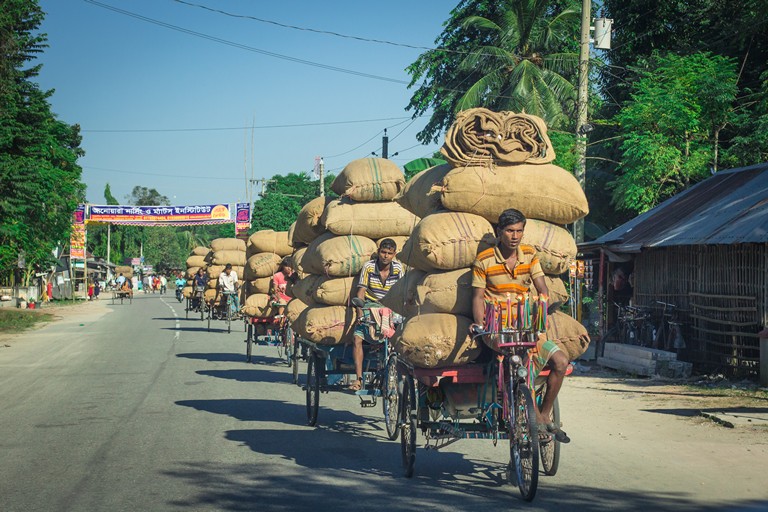
Panchagarh the Foothill of the Himalayas
Continuing on our route we reach Panchagarh, a small district in the extreme north of Bangladesh. This is the northern tip of the country where India borders Bangladesh to both the east and the west via a small land bridge. The Indian border is visible along the road to Panchagarh as a white picket fence dotted by sentry towers and massive floodlights.
In Panchagarh we explore the rural villages by foot. Walking along small dirt trails through the farms we pass by houses shared by people and cows and goats. The locals work the land in the midday heat to earn their one dollar a day wages. A middle aged man walks by heavily laden with straw before giving a brief smile and shouts out “hello, you play cricket?”
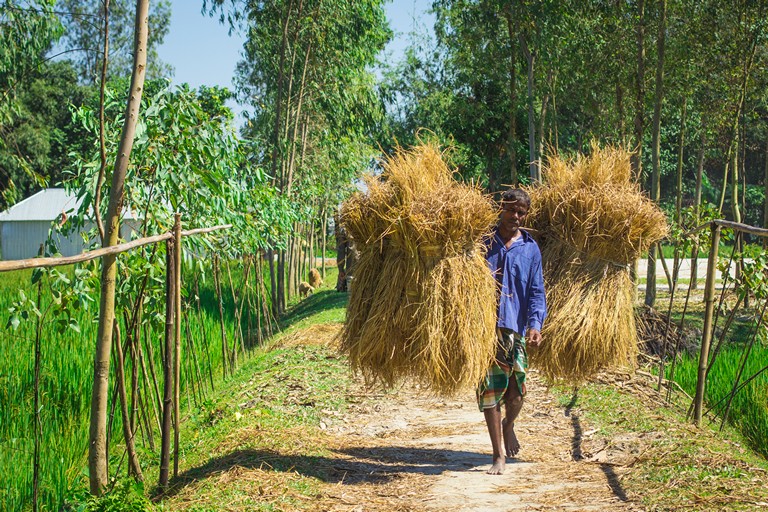
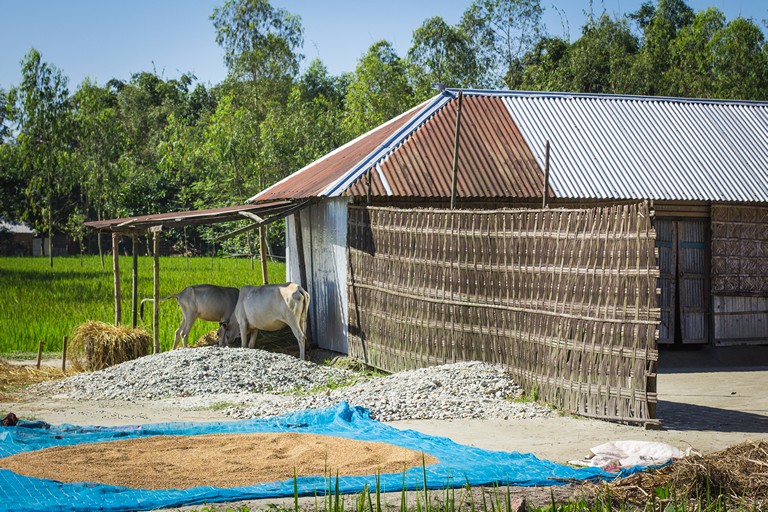
Cricket is an incredibly popular sport in Bangladesh from the city to the rural ends of the country. As an Australian this commonly becomes the conversation starter with the locals popping out their favorite names of Ricky Ponting, Adam Gilchrist and Shane Warne. Though I’m not a huge cricket fan it is an easy way to break the ice.
Aside from farming villages Panchargarh offers a secret beauty. Get up early in the morning, find a good viewpoint and you’ll be standing at the base of the Himalayas. This small town really is the foothill of the majestic mountain range.
The Tentulia Tea House
As we continue northwards we reach the village of Tentulia. Tentulia is famous locally for its huge tamarind trees planted in the town center. The trees reach out over the road and make a communal meeting place.
The town center is a busy place with Bangladeshi men dressed in their traditional white Islamic robes and long whispy orange dyed beards. They socialize around the trees and the neighboring bazaar. However stepping out of the van is a shock for them as they stare in bemusement that a westerner is traveling Bangladesh this far north. It is a place that rarely sees tourists.

Tentulia is also popular for its tea plantations and makes a great opportunity to head into a street side café. Stepping inside a dilapidated wooden shack by the road we are welcomed by a middle-aged man. He heats milk in a metal pot over a wood fired stove and pours us a glass of Bangladeshi style tea each.
As we drink he tells us the milk is the freshest we will ever have with our tea. AS he sees our faces question this he points through the small opening beside the kitchen where his cows stands. He had milked the cow just 10 minutes before serving our hot glass of tea!
Bangladeshis are proud of their tea. Sitting at the handmade wooden table my companions brag about how many glasses they each drink per day. One man named Sameer claims he drinks up to 25 glasses! It seems a bit excessive but I let him have the benefit of the doubt.
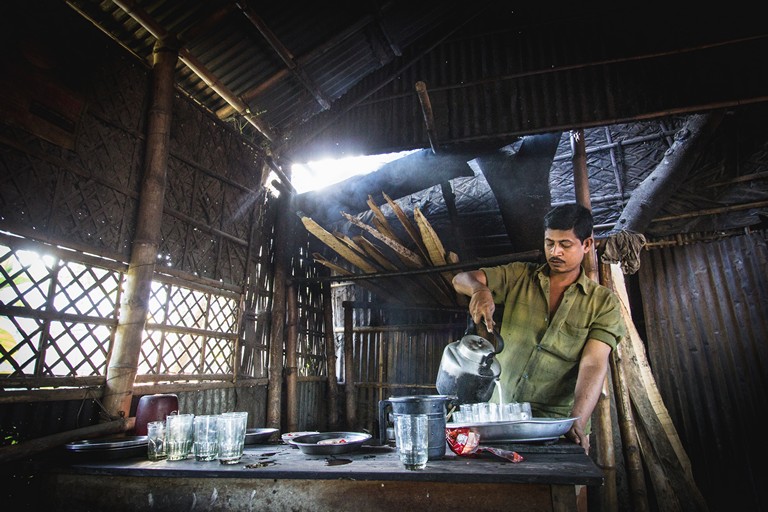
God Bless You
The route south back to Saidpur is just over 100 km and should take approximately 5 hours. Our flight is due to leave in 4 hours. This brings out the most erratic and daring driving I have ever seen, made about 10 times worse by sitting in the front seat staring at imminent head on collisions.
Rickshaws fly past, goats nearly lose their lives every few minutes and trucks fly at us head on down the middle of the road. As a panic attack seems near a bus comes past with the words painted on its side at head height. God Bless You. Pretty much sums it up.
I have to admit that traveling Bangladesh was been the biggest culture shock I’ve experienced. It is a place I could never live in but definitely return to visit. The simple lifestyle, beautiful landscapes, the love of tea and amazing foods are all something I will crave for a long time after leaving.
More reading on Bangladesh
For an in-depth review of Dhaka with loads of photos check out Notes on Dhaka by Nomadic Notes.




